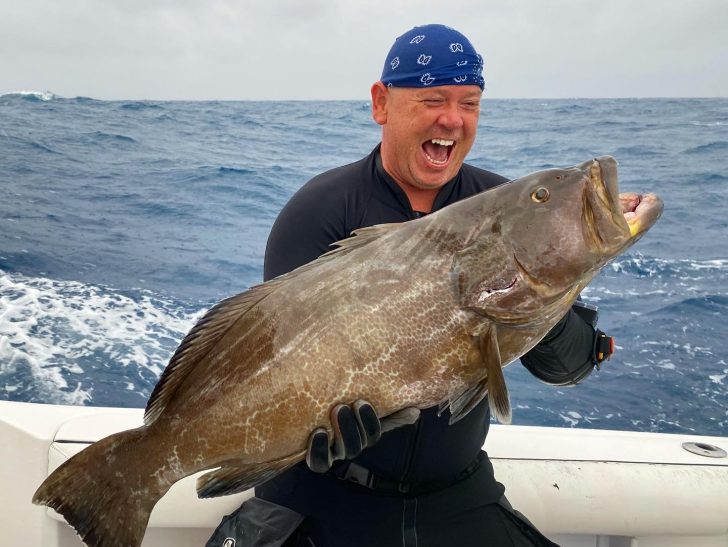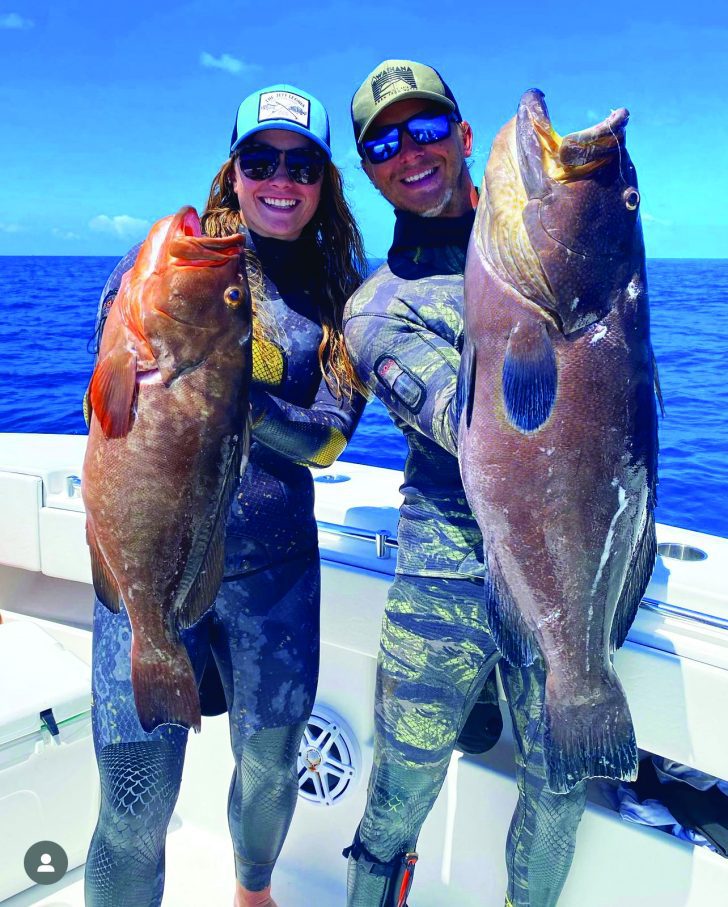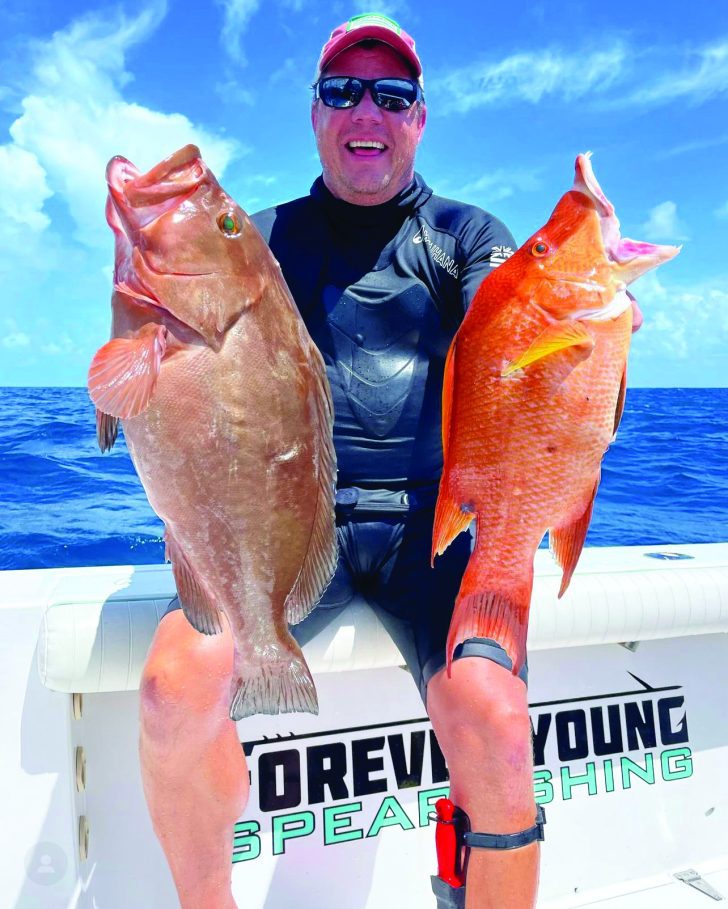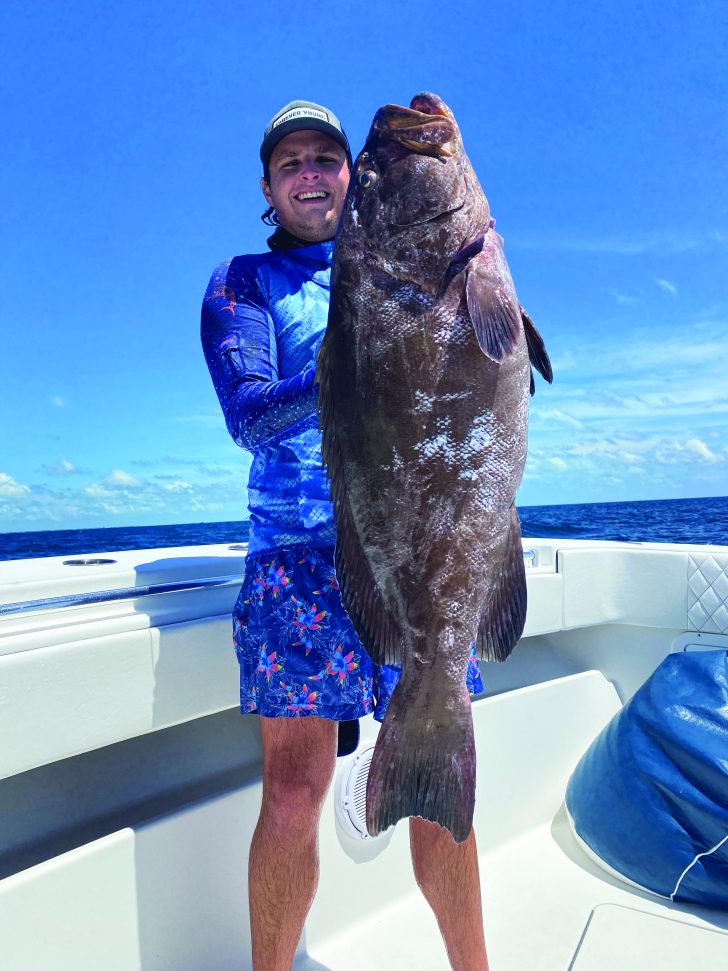by: Capt. Tony Young
For many divers and anglers, heading over the the Florida Keys is our favorite time of year and has finally arrived! Grouper and hogfish season is officially open and will remain open through November 30th for hogfish and December 31st for grouper. If you’re diving, grouper is always the fish we look forward to hunting all day. For fishing, this season adds excitement to every spot you fish, whether it be a wreck or a reef. While drifting for muttons, or anchored up yellow tailing with a bottom rod, May 1st marks the beginning of excitement knowing all those fish you’ve been releasing all winter can finally come back to the dock with you!

Black grouper on the other hand are a little more difficult to hunt. Unlike red grouper, which allow you to swim right up, black grouper will never give you that shot. A legal size black, needs to be 24” and to get that size they have seen a few things in their life. They can pick up on your energy in the water and a frantic/excited diver will be picked off as a threat before a shot can be taken. All grouper have a hard time seeing up and down, but see very well side to side. We always hunt from above, spotting the fish from higher up in the water column or from the surface, then working straight down on them. In order for the grouper to see you, they will need to turn on their side, allowing for a great broadside shot if you play your cards right. Black grouper are also big on eye contact and approach angles, I rarely swim directly towards them and always keep my head looking in a different direction. If the fish runs from you, keep them barely in sight and back off. They will always go into a hole somewhere, which will allow you a chance to work them out. If they keep running down the reef line, back off and swim higher in the water column, they will slow down and if you don’t pose a threat, you will be able to get a shot off with patience.
Coming off the winter bluewater season, you will need to switch up your rig. For winter pelagics we run powerhouse guns with floats, this is not needed for grouper. I recently built a new gun, specifically for hunting large black grouper. I call my gun the “Super 60”, which is a 60” Amero speargun built by Hatch Custom Spearguns. This rig is outfitted with three bands, 5/16” diameter shaft, cable Neptonics stiptip, cable rubber coated shooting line, and a 60m reel. Groupers have a very different skin than snapper and a slip tip can hang onto the thinnest little piece of grouper skin if you do not apply too much pressure, which is why the reel comes in handy. The cable will keep your fish from breaking off if they run into a coral head or section of a wreck, nothing is more heartbreaking than losing a nice fish to the wreck. If you’re shooting without a reel, I’ll often let go of my gun to allow the fish to run on a less than ideal shot placement. Your fish will head to the first hole he sees and try to get cover. When your fish holes up, do not pull the line to drag them out, you will most likely tear them off.



Getting back to the dock with a nice mature grouper in the box is a great feeling. Save every part of the fish and enjoy the meals. Currently, my favorite cut of meat from this fish is the collar (throat). My favorite way to prepare the throat is to make smoked pulled grouper sliders. I’ll do a BBQ rub on the grouper collar and smoke it at 220 degrees till the meat pulls off the bone, basting the meat in a good sauce while it smokes. Once you get the meat pulled apart, place it on your favorite bun or roll with some good coleslaw and sauce of your choice. This recipe is excellent and has a unique taste that most aren’t accustomed to with fish. We also enjoy cooking what I call grouper chips, thinly sliced pieces of the grouper meat that is floured and pan fried. Dip in a homemade chipotle sauce and you have a perfect appetizer or meal on its own!
I hope you enjoy the challenge of hunting grouper as much as we do, they are an amazing fish and a prize species to target for the day! Remember that mature grouper have been down there a long time and have seen every trick in the book. Take your time and hunt them slowly, the reward is worth the patience.
Dive Safe!
